Toward New Value-Added Products Made from Anaerobic Digestate: Part 2—Effect of Loading Level on the Densification of Solid Digestate
Abstract
:1. Introduction
- The elastic energy dissipated was independent of moisture content and cycle number and remained relatively constant. The pressure applied in the study was 113.2 MPa, which was high enough to obtain pellets with good strength characteristics. Hence, it was examined whether, at lower pressures, the elastic strain energy released as a result of strain relief is also independent of moisture content, which is a key factor in the thickening process. It was also noticed that the share of elastic energy increased with the moisture content of the digestate. This unexpected conclusion should also be verified (validated) under different loading conditions.
- The second observation was related to the hysteresis loop (the shape of the field area enclosed between the loading and unloading curves). For wet SAD, an immediate elastic response (springback) was observed at the applied pressure, whereas a contrasting result was observed for dry digestate. This also suggests a possible effect of the loading force, which should be investigated in detail.
2. Materials and Methods
3. Results and Discussion
3.1. Effect of Load on Energy and Deformation Distribution—First Loading/Unloading Cycle
3.2. Effect of Load on Energy and Deformation Distribution—Cycles 2–10
3.3. Effect of Load on Pellet Strength
4. Conclusions
Author Contributions
Funding
Institutional Review Board Statement
Informed Consent Statement
Data Availability Statement
Conflicts of Interest
Nomenclature
| Et | total compressive energy |
| Er | recoverable (elastic) energy |
| En-r | nonrecoverable (permanent) energy |
| lt | total capture displacement (deformation) |
| lr | recoverable (elastic) deformation |
| ln–r | nonrecoverable (permanent) deformation |
| %Er, %En–r | relative shares of recoverable and nonrecoverable energy |
| %lr, %ln–r | relative shares of recoverable and nonrecoverable deformation |
| SI | strength index of a pellet |
| Indexes | |
| 1 | first loading/unloading cycle (compaction) |
| 2-10 | cycles from 2 to 10 |
References
- Uddin, M.N.; Siddiki, S.Y.A.; Mofijur, M.; Djavanroodi, F.; Hazrat, M.A.; Show, P.L.; Ahmed, S.F.; Chu, Y.-M. Prospects of Bioenergy Production From Organic Waste Using Anaerobic Digestion Technology: A Mini Review. Front. Energy Res. 2021, 9, 627093. [Google Scholar] [CrossRef]
- Lamolinara, B.; Pérez-Martínez, A.; Guardado-Yordi, E.; Guillén Fiallos, C.; Diéguez-Santana, K.; Ruiz-Mercado, G.J. Anaerobic Digestate Management, Environmental Impacts, and Techno-Economic Challenges. Waste Manag. 2022, 140, 14–30. [Google Scholar] [CrossRef]
- Kunatsa, T.; Xia, X. A Review on Anaerobic Digestion with Focus on the Role of Biomass Co-Digestion, Modelling and Optimisation on Biogas Production and Enhancement. Bioresour. Technol. 2022, 344, 126311. [Google Scholar] [CrossRef] [PubMed]
- Czekała, W. Digestate as a Source of Nutrients: Nitrogen and Its Fractions. Water 2022, 14, 4067. [Google Scholar] [CrossRef]
- Slepetiene, A.; Ceseviciene, J.; Amaleviciute-Volunge, K.; Mankeviciene, A.; Parasotas, I.; Skersiene, A.; Jurgutis, L.; Volungevicius, J.; Veteikis, D.; Mockeviciene, I. Solid and Liquid Phases of Anaerobic Digestate for Sustainable Use of Agricultural Soil. Sustainability 2023, 15, 1345. [Google Scholar] [CrossRef]
- Đurđević, D.; Blecich, P.; Lenić, K. Energy Potential of Digestate Produced by Anaerobic Digestion in Biogas Power Plants: The Case Study of Croatia. Environ. Eng. Sci. 2018, 35, 1286–1293. [Google Scholar] [CrossRef]
- Czekała, W.; Bartnikowska, S.; Dach, J.; Janczak, D.; Smurzyńska, A.; Kozłowski, K.; Bugała, A.; Lewicki, A.; Cieślik, M.; Typańska, D.; et al. The Energy Value and Economic Efficiency of Solid Biofuels Produced from Digestate and Sawdust. Energy 2018, 159, 1118–1122. [Google Scholar] [CrossRef]
- Cathcart, A.; Smyth, B.M.; Lyons, G.; Murray, S.T.; Rooney, D.; Johnston, C.R. An Economic Analysis of Anaerobic Digestate Fuel Pellet Production: Can Digestate Fuel Pellets Add Value to Existing Operations? Clean. Eng. Technol. 2021, 3, 100098. [Google Scholar] [CrossRef]
- Golovko, O.; Ahrens, L.; Schelin, J.; Sörengård, M.; Bergstrand, K.J.; Asp, H.; Hultberg, M.; Wiberg, K. Organic Micropollutants, Heavy Metals and Pathogens in Anaerobic Digestate Based on Food Waste. J. Environ. Manag. 2022, 313, 114997. [Google Scholar] [CrossRef] [PubMed]
- Wang, W.; Chang, J.S.; Lee, D.J. Anaerobic Digestate Valorization beyond Agricultural Application: Current Status and Prospects. Bioresour. Technol. 2023, 373, 128742. [Google Scholar] [CrossRef]
- Zeng, Q.; Zhen, S.; Liu, J.; Ni, Z.; Chen, J.; Liu, Z.; Qi, C. Impact of Solid Digestate Processing on Carbon Emission of an Industrial-Scale Food Waste Co-Digestion Plant. Bioresour. Technol. 2022, 360, 127639. [Google Scholar] [CrossRef] [PubMed]
- Petrova, I.P.; Ruser, R.; Guzman-Bustamante, I. Pellets from Biogas Digestates: A Substantial Source of N2O Emissions. Waste Biomass Valorization 2021, 12, 2433–2444. [Google Scholar] [CrossRef]
- Samoraj, M.; Mironiuk, M.; Izydorczyk, G.; Witek-Krowiak, A.; Szopa, D.; Moustakas, K.; Chojnacka, K. The Challenges and Perspectives for Anaerobic Digestion of Animal Waste and Fertilizer Application of the Digestate. Chemosphere 2022, 295, 133799. [Google Scholar] [CrossRef] [PubMed]
- Czekała, W.; Nowak, M.; Piechota, G. Sustainable Management and Recycling of Anaerobic Digestate Solid Fraction by Composting: A Review. Bioresour. Technol. 2023, 375, 128813. [Google Scholar] [CrossRef]
- Valentinuzzi, F.; Cavani, L.; Porfido, C.; Terzano, R.; Pii, Y.; Cesco, S.; Marzadori, C.; Mimmo, T. The Fertilising Potential of Manure-Based Biogas Fermentation Residues: Pelleted vs. Liquid Digestate. Heliyon 2020, 6, e03325. [Google Scholar] [CrossRef]
- Rizzioli, F.; Bertasini, D.; Bolzonella, D.; Frison, N.; Battista, F. A Critical Review on the Techno-Economic Feasibility of Nutrients Recovery from Anaerobic Digestate in the Agricultural Sector. Sep. Purif. Technol. 2023, 306, 122690. [Google Scholar] [CrossRef]
- Cathcart, A.; Smyth, B.M.; Forbes, C.; Lyons, G.; Murray, S.T.; Rooney, D.; Johnston, C.R. Effect of Anaerobic Digestate Fuel Pellet Production on Enterobacteriaceae and Salmonella Persistence. GCB Bioenergy 2022, 14, 1055–1064. [Google Scholar] [CrossRef]
- Sarker, T.R.; Nanda, S.; Meda, V.; Dalai, A.K. Densification of Waste Biomass for Manufacturing Solid Biofuel Pellets: A Review. Environ. Chem. Lett. 2022, 21, 231–264. [Google Scholar] [CrossRef]
- Mohammadi, A. Overview of the Benefits and Challenges Associated with Pelletizing Biochar. Processes 2021, 9, 1591. [Google Scholar] [CrossRef]
- Ibitoye, S.E.; Jen, T.C.; Mahamood, R.M.; Akinlabi, E.T. Densification of Agro-Residues for Sustainable Energy Generation: An Overview. Bioresour. Bioprocess. 2021, 8, 75. [Google Scholar] [CrossRef]
- Mostafa, M.E.; Hu, S.; Wang, Y.; Su, S.; Hu, X.; Elsayed, S.A.; Xiang, J. The Significance of Pelletization Operating Conditions: An Analysis of Physical and Mechanical Characteristics as Well as Energy Consumption of Biomass Pellets. Renew. Sustain. Energy Rev. 2019, 105, 332–348. [Google Scholar] [CrossRef]
- Bajwa, D.S.; Peterson, T.; Sharma, N.; Shojaeiarani, J.; Bajwa, S.G. A Review of Densified Solid Biomass for Energy Production. Renew. Sustain. Energy Rev. 2018, 96, 296–305. [Google Scholar] [CrossRef]
- Guo, L.; Wang, D.; Tabil, L.G.; Wang, G. Compression and Relaxation Properties of Selected Biomass for Briquetting. Biosyst. Eng. 2016, 148, 101–110. [Google Scholar] [CrossRef]
- Demirel, C.; Gürdil, G.A.K.; Kabutey, A.; Herak, D. Effects of Forces, Particle Sizes, and Moisture Contents on Mechanical Behaviour of Densified Briquettes from Ground Sunflower Stalks and Hazelnut Husks. Energies 2020, 13, 2542. [Google Scholar] [CrossRef]
- Harun, N.Y.; Afzal, M.T. Effect of Particle Size on Mechanical Properties of Pellets Made from Biomass Blends. Procedia Eng. 2016, 148, 93–99. [Google Scholar] [CrossRef] [Green Version]
- Kaliyan, N.; Morey, R.V. Constitutive Model for Densification of Corn Stover and Switchgrass. Biosyst. Eng. 2009, 104, 47–63. [Google Scholar] [CrossRef]
- Tumuluru, J.S.; Wright, C.T.; Hess, J.R.; Kenney, K.L. A Review of Biomass Densifi Cation Systems to Develop Uniform Feedstock Commodities for Bioenergy Application. Biofuels Bioprod. Bioref. 2011, 6, 683–707. [Google Scholar] [CrossRef]
- Anukam, A.; Berghel, J.; Henrikson, G.; Frodeson, S.; Ståhl, M. A Review of the Mechanism of Bonding in Densified Biomass Pellets. Renew. Sustain. Energy Rev. 2021, 148, 111249. [Google Scholar] [CrossRef]
- Frodeson, S.; Henriksson, G.; Berghel, J. Effects of Moisture Content during Densification of Biomass Pellets, Focusing on Polysaccharide Substances. Biomass Bioenergy 2019, 122, 322–330. [Google Scholar] [CrossRef]
- Ungureanu, N.; Vladut, V.; Voicu, G.; Dinca, M.N.; Zabava, B.S. Influence of Biomass Moisture Content on Pellet Properties—Review. In Proceedings of the Engineering for Rural Development, Jelgava, Latvia, 23–25 May 2018; Latvia University of Agriculture: Jelgava, Latvia, 2018; Volume 17, pp. 1876–1883. [Google Scholar]
- Rhén, C.; Gref, R.; Sjöström, M.; Wästerlund, I. Effects of Raw Material Moisture Content, Densification Pressure and Temperature on Some Properties of Norway Spruce Pellets. Fuel Process. Technol. 2005, 87, 11–16. [Google Scholar] [CrossRef]
- Łysiak, G.; Kulig, R.; Aridhee, J.K. Toward New Value-Added Products Made from Anaerobic Digestate: Part 1—Study on the Effect of Moisture Content on the Densification of Solid Digestate. Sustainability 2023, 15, 4548. [Google Scholar] [CrossRef]
- Chen, C.; Yang, R.; Wang, X.; Qu, B.; Zhang, M.; Ji, G.; Li, A. Effect of In-Situ Torrefaction and Densification on the Properties of Pellets from Rice Husk and Rice Straw. Chemosphere 2022, 289, 133009. [Google Scholar] [CrossRef]
- Sharma, H.B.; Sarmah, A.K.; Dubey, B. Hydrothermal Carbonization of Renewable Waste Biomass for Solid Biofuel Production: A Discussion on Process Mechanism, the Influence of Process Parameters, Environmental Performance and Fuel Properties of Hydrochar. Renew. Sustain. Energy Rev. 2020, 123, 109761. [Google Scholar] [CrossRef]
- Li, W.; Wang, M.; Meng, F.; Zhang, Y.; Zhang, B. A Review on the Effects of Pretreatment and Process Parameters on Properties of Pellets. Energies 2022, 15, 7303. [Google Scholar] [CrossRef]
- Afra, E.; Abyaz, A.; Saraeyan, A. The Production of Bagasse Biofuel Briquettes and the Evaluation of Natural Binders (LNFC, NFC, and Lignin) Effects on Their Technical Parameters. J. Clean. Prod. 2021, 278, 123543. [Google Scholar] [CrossRef]
- Tumuluru, J.S.; Conner, C.C.; Hoover, A.N. Method to Produce Durable Pellets at Lower Energy Consumption Using High Moisture Corn Stover and a Corn Starch Binder in a Flat Die Pellet Mill. J. Vis. Exp. 2016, 2016, e54092. [Google Scholar] [CrossRef] [Green Version]
- Ahmed, I.; Ali, A.; Ali, B.; Hassan, M.; Hussain, S.; Hashmi, H.; Ali, Z.; Soomro, A.; Mukwana, K. Production of Pellets from Furfural Residue and Sawdust Biomass: Effect of Moisture Content, Particle Size and a Binder on Pellet Quality and Energy Consumption. Bioenergy Res. 2022, 15, 1292–1303. [Google Scholar] [CrossRef]
- Cavallo, E.; Pampuro, N. Effects of Compressing Pressure on Briquettes Made from Woody Biomass. Chem. Eng. Trans. 2017, 58, 517–522. [Google Scholar] [CrossRef]
- Granado, M.P.P.; Suhogusoff, Y.V.M.; Santos, L.R.O.; Yamaji, F.M.; de Conti, A.C. Effects of Pressure Densification on Strength and Properties of Cassava Waste Briquettes. Renew. Energy 2021, 167, 306–312. [Google Scholar] [CrossRef]
- Orisaleye, J.I.; Jekayinfa, S.O.; Dittrich, C.; Obi, O.F.; Pecenka, R. Effects of Feeding Speed and Temperature on Properties of Briquettes from Poplar Wood Using a Hydraulic Briquetting Press. Resources 2023, 12, 12. [Google Scholar] [CrossRef]
- Obidziński, S.; Piekut, J. Influence of Speed of Densification Piston and Particle Size of Densified Material on the Value of Densifying Pressures and Pellets Density. J. Res. App. Agricul. Eng. 2015, 60, 63–68. Available online: http://yadda.icm.edu.pl/baztech/element/bwmeta1.element.baztech-d891bafd-387e-4b4e-b6c6-a55cff7dd44d (accessed on 12 March 2023).
- Kaliyan, N.; Morey, R.V. Densification Characteristics of Corn Cobs. Fuel Process. Technol. 2010, 91, 559–565. [Google Scholar] [CrossRef]
- Li, Y.; Liu, H. High-Pressure Densification of Wood Residues to Form an Upgraded Fuel. Biomass Bioenergy 2000, 19, 177–186. [Google Scholar] [CrossRef]
- Orisaleye, J.I.; Jekayinfa, S.O.; Braimoh, O.M.; Edhere, V.O. Empirical Models for Physical Properties of Abura (Mitragyna Ciliata) Sawdust Briquettes Using Response Surface Methodology. Clean. Eng. Technol. 2022, 7, 100447. [Google Scholar] [CrossRef]
- Tumuluru, J.S. Effect of Pellet Die Diameter on Density and Durability of Pellets Made from High Moisture Woody and Herbaceous Biomass. Carbon Resour. Convers. 2018, 1, 44–54. [Google Scholar] [CrossRef]
- Mani, S.; Tabil, L.G.; Sokhansanj, S. Evaluation of Compaction Equations Applied to Four Biomass Species. Can. Biosyst. Eng. 2004, 46, 55. [Google Scholar]
- Gilbert, P.; Ryu, C.; Sharifi, V.; Swithenbank, J. Effect of Process Parameters on Pelletisation of Herbaceous Crops. Fuel 2009, 88, 1491–1497. [Google Scholar] [CrossRef]
- Kaliyan, N.; Morey, R.V. Natural Binders and Solid Bridge Type Binding Mechanisms in Briquettes and Pellets Made from Corn Stover and Switchgrass. Bioresour. Technol. 2010, 101, 1082–1090. [Google Scholar] [CrossRef]
- Li, W.; Guo, W.; Bu, W.; Jiang, Y.; Wang, Y.; Yang, W.; Yin, X. A Non-Liner Constitutive Model of Three Typical Biomass Material Pelletization for Capturing Particle Mechanical Behaviors during the Elasto-Visco-Plastic Deformation Stage. Renew. Energy 2020, 149, 1370–1385. [Google Scholar] [CrossRef]
- Okot, D.K.; Bilsborrow, P.E.; Phan, A.N. Effects of Operating Parameters on Maize COB Briquette Quality. Biomass Bioenergy 2018, 112, 61–72. [Google Scholar] [CrossRef] [Green Version]
- Stasiak, M.; Molenda, M.; Bańda, M.; Wiącek, J.; Parafiniuk, P.; Gondek, E. Mechanical and Combustion Properties of Sawdust-Straw Pellets Blended in Different Proportions. Fuel Process. Technol. 2017, 156, 366–375. [Google Scholar] [CrossRef]
- Poddar, S.; Kamruzzaman, M.; Sujan, S.M.A.; Hossain, M.; Jamal, M.S.; Gafur, M.A.; Khanam, M. Effect of Compression Pressure on Lignocellulosic Biomass Pellet to Improve Fuel Properties: Higher Heating Value. Fuel 2014, 131, 43–48. [Google Scholar] [CrossRef]
- Adapa, P.K.; Tabil, L.G.; Schoenau, G.J. Compression Characteristics of Non-Treated and Steam-Exploded Barley, Canola, Oat, and Wheat Straw Grinds. Appl. Eng. Agric. 2010, 26, 617–632. [Google Scholar] [CrossRef]
- Jiang, L.; Liang, J.; Yuan, X.; Li, H.; Li, C.; Xiao, Z.; Huang, H.; Wang, H.; Zeng, G. Co-Pelletization of Sewage Sludge and Biomass: The Density and Hardness of Pellet. Bioresour. Technol. 2014, 166, 435–443. [Google Scholar] [CrossRef]
- Mani, S.; Tabil, L.G.; Sokhansanj, S. Specific Energy Requirement for Compacting Corn Stover. Bioresour. Technol. 2006, 97, 1420–1426. [Google Scholar] [CrossRef] [PubMed]
- Carone, M.T.; Pantaleo, A.; Pellerano, A. Influence of Process Parameters and Biomass Characteristics on the Durability of Pellets from the Pruning Residues of Olea Europaea L. Biomass Bioenergy 2011, 35, 402–410. [Google Scholar] [CrossRef]
- Styks, J.; Wróbel, M.; Frączek, J.; Knapczyk, A. Effect of Compaction Pressure and Moisture Content on Quality Parameters of Perennial Biomass Pellets. Energies 2020, 13, 1859. [Google Scholar] [CrossRef] [Green Version]
- Orisaleye, J.I.; Jekayinfa, S.O.; Adebayo, A.O.; Ahmed, N.A.; Pecenka, R. Effect of Densification Variables on Density of Corn Cob Briquettes Produced Using a Uniaxial Compaction Biomass Briquetting Press. Energy Sources Part A Recovery Util. Environ. Eff. 2018, 40, 3019–3028. [Google Scholar] [CrossRef]
- Li, H.; Jiang, L.B.; Li, C.Z.; Liang, J.; Yuan, X.Z.; Xiao, Z.H.; Xiao, Z.H.; Wang, H. Co-Pelletization of Sewage Sludge and Biomass: The Energy Input and Properties of Pellets. Fuel Process. Technol. 2015, 132, 55–61. [Google Scholar] [CrossRef]
- Kulig, R.; Łysiak, G.; Skonecki, S. Prediction of Pelleting Outcomes Based on Moisture versus Strain Hysteresis during the Loading of Individual Pea Seeds. Biosyst. Eng. 2015, 129, 226–236. [Google Scholar] [CrossRef]
- Łysiak, G. Fracture Toughness of Pea: Weibull Analysis. J. Food Eng. 2007, 83, 436–443. [Google Scholar] [CrossRef]
- Lisowski, A.; Pajor, M.; Świętochowski, A.; Dąbrowska, M.; Klonowski, J.; Mieszkalski, L.; Ekielski, A.; Stasiak, M.; Piątek, M. Effects of Moisture Content, Temperature, and Die Thickness on the Compaction Process, and the Density and Strength of Walnut Shell Pellets. Renew. Energy 2019, 141, 770–781. [Google Scholar] [CrossRef]
- Laskowski, J.; Łysiak, G.; Skonecki, S. Mechanical Properties of Granular Agro-materials and Food Powders for Industrial Practice Part II Material Properties for Grinding and Agglomeration; Institute of Agrophysics PAS: Lublin, Poland, 2005; pp. 1–160. Available online: https://www.ipan.lublin.pl/wp-content/uploads/2017/03/mat_coe25.pdf (accessed on 12 March 2023).
- Styks, J.; Knapczyk, A.; Łapczyńska-Kordon, B. Effect of Compaction Pressure and Moisture Content on Post-Agglomeration Elastic Springback of Pellets. Materials 2021, 14, 879. [Google Scholar] [CrossRef] [PubMed]
- Ilic, D.; Williams, K.C.; Ellis, D. Assessment of Biomass Bulk Elastic Response to Consolidation. Chem. Eng. Res. Des. 2018, 135, 185–196. [Google Scholar] [CrossRef]
- Karamchandani, A.; Yi, H.; Puri, V.M. Fundamental Mechanical Properties of Ground Switchgrass for Quality Assessment of Pellets. Powder Technol. 2015, 283, 48–56. [Google Scholar] [CrossRef]
- Salim, N.; Hashim, R.; Sulaiman, O.; Ibrahim, M.; Sato, M.; Hiziroglu, S. Optimum Manufacturing Parameters for Compressed Lumber from Oil Palm (Elaeis Guineensis) Trunks: Respond Surface Approach. Compos. Part B Eng. 2012, 43, 988–996. [Google Scholar] [CrossRef]
- Frodeson, S.; Lindén, P.; Henriksson, G.; Berghel, J. Compression of Biomass Substances—A Study on Springback Effects and Color Formation in Pellet Manufacture. Appl. Sci. 2019, 9, 4302. [Google Scholar] [CrossRef] [Green Version]
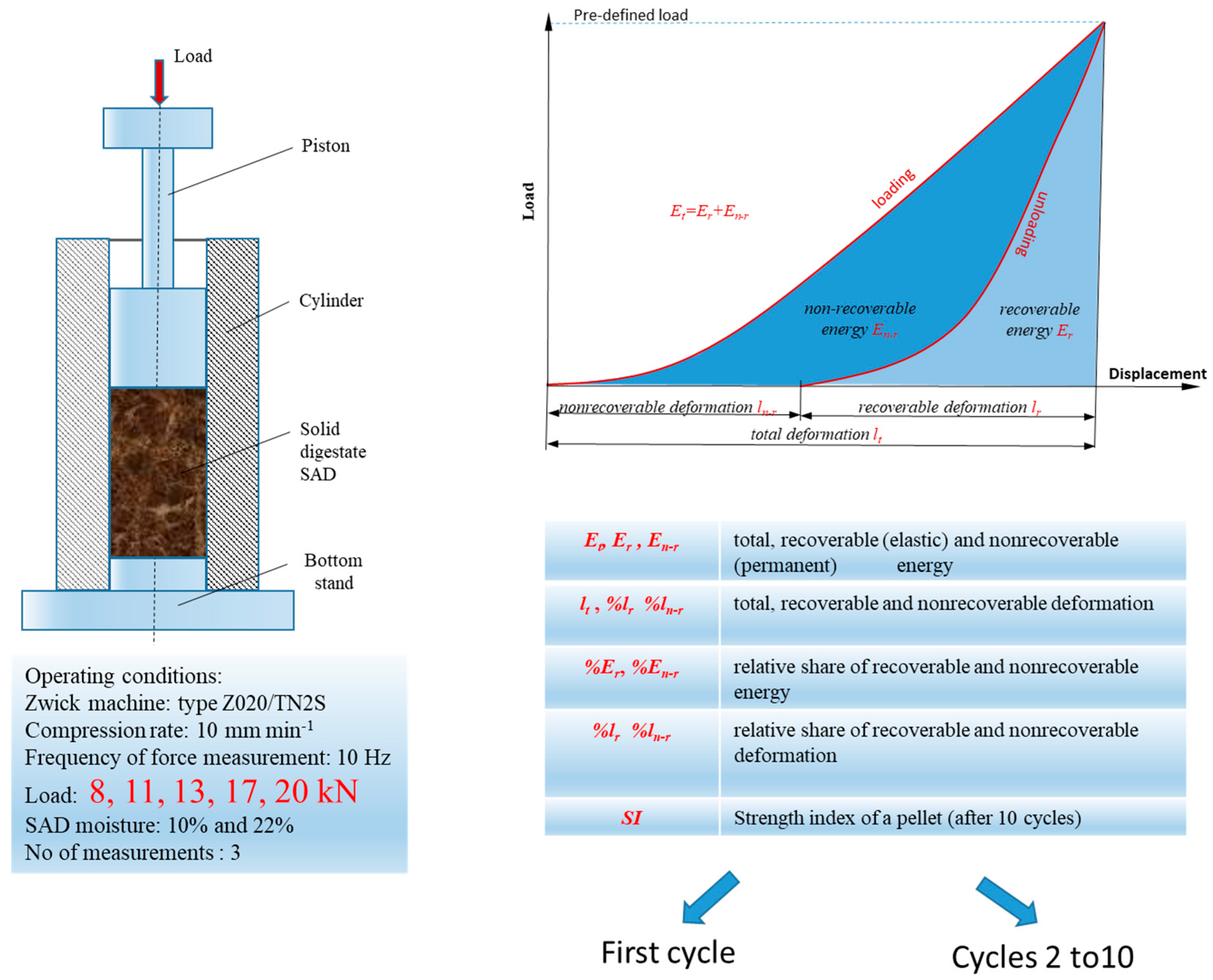

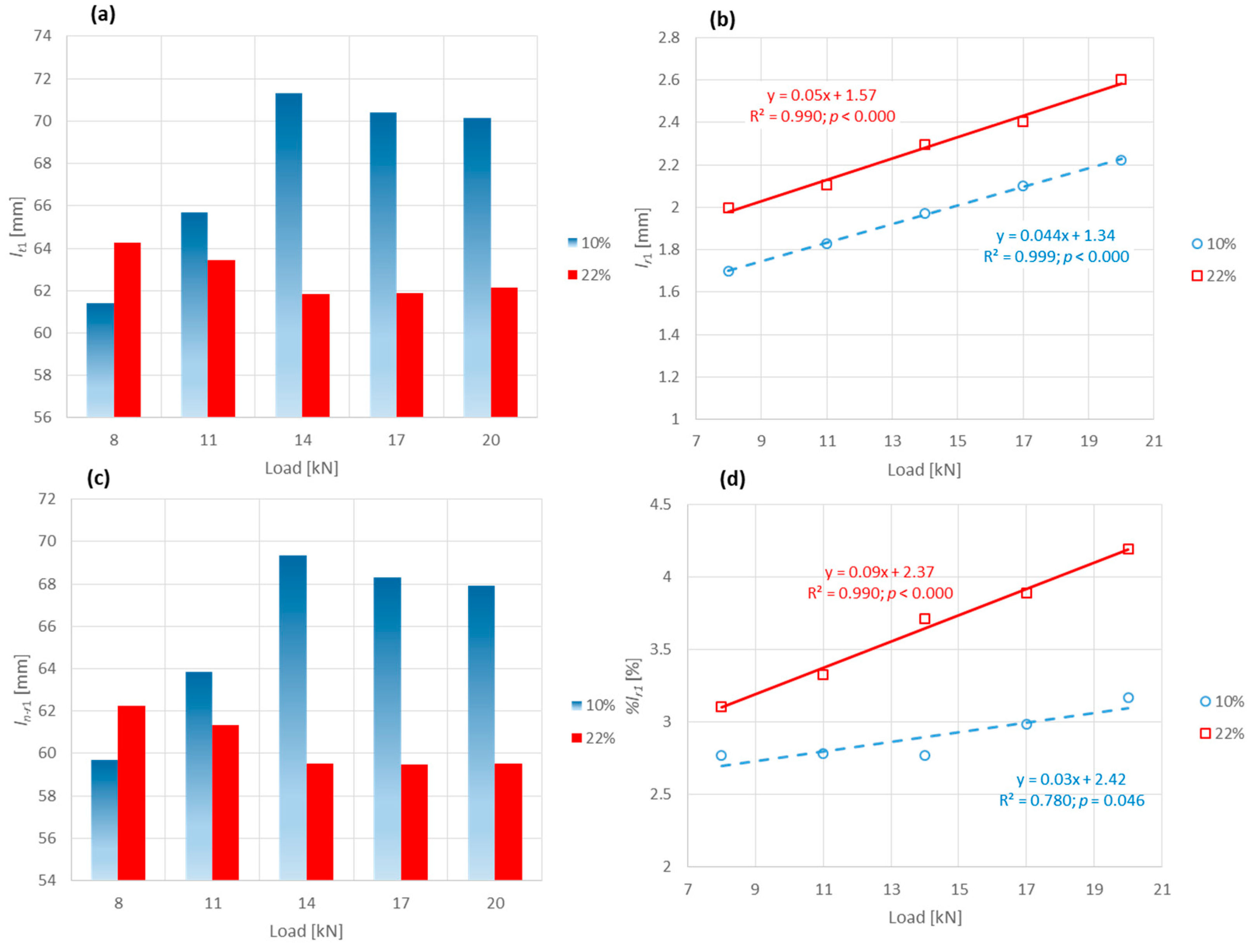
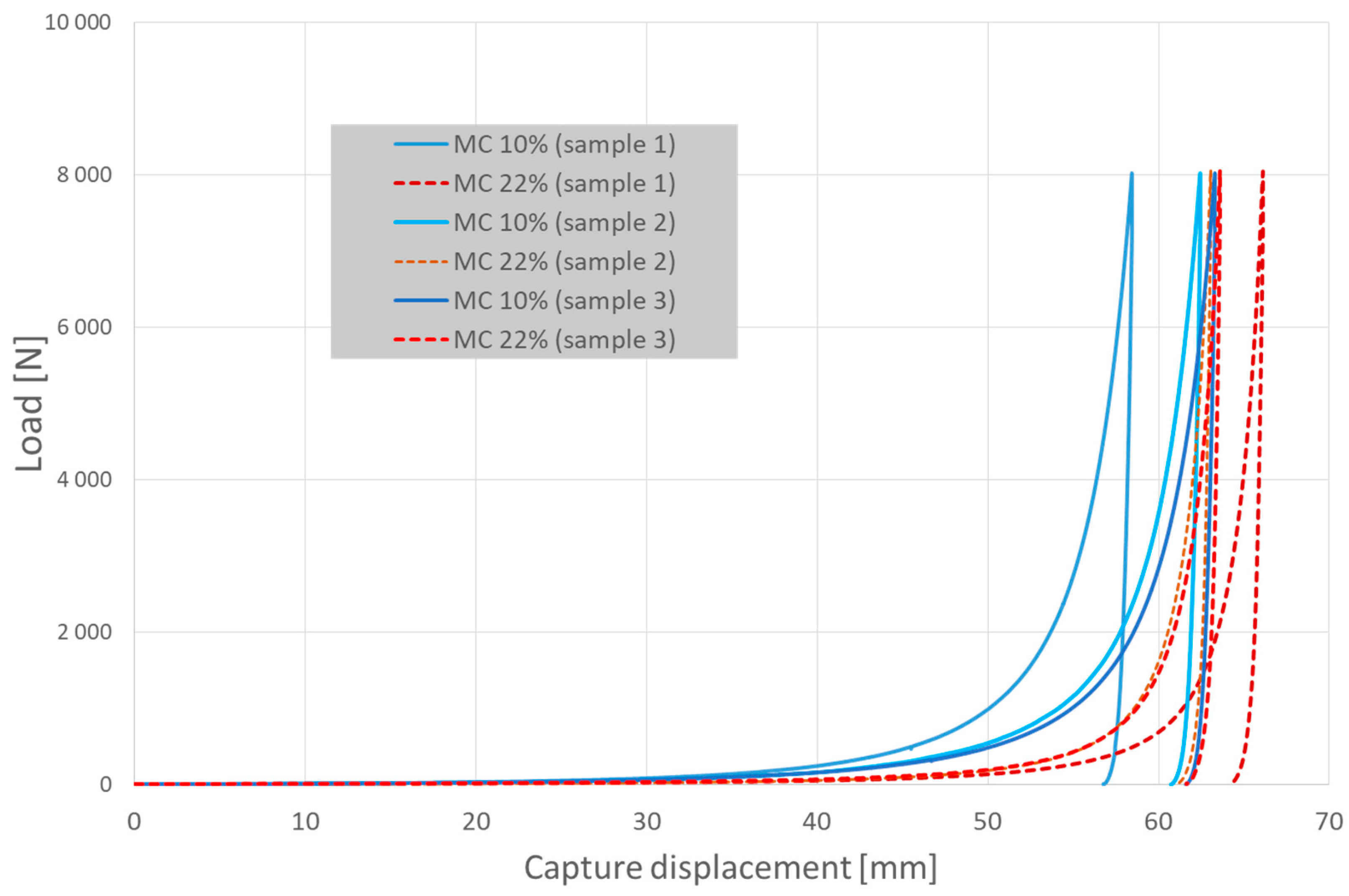


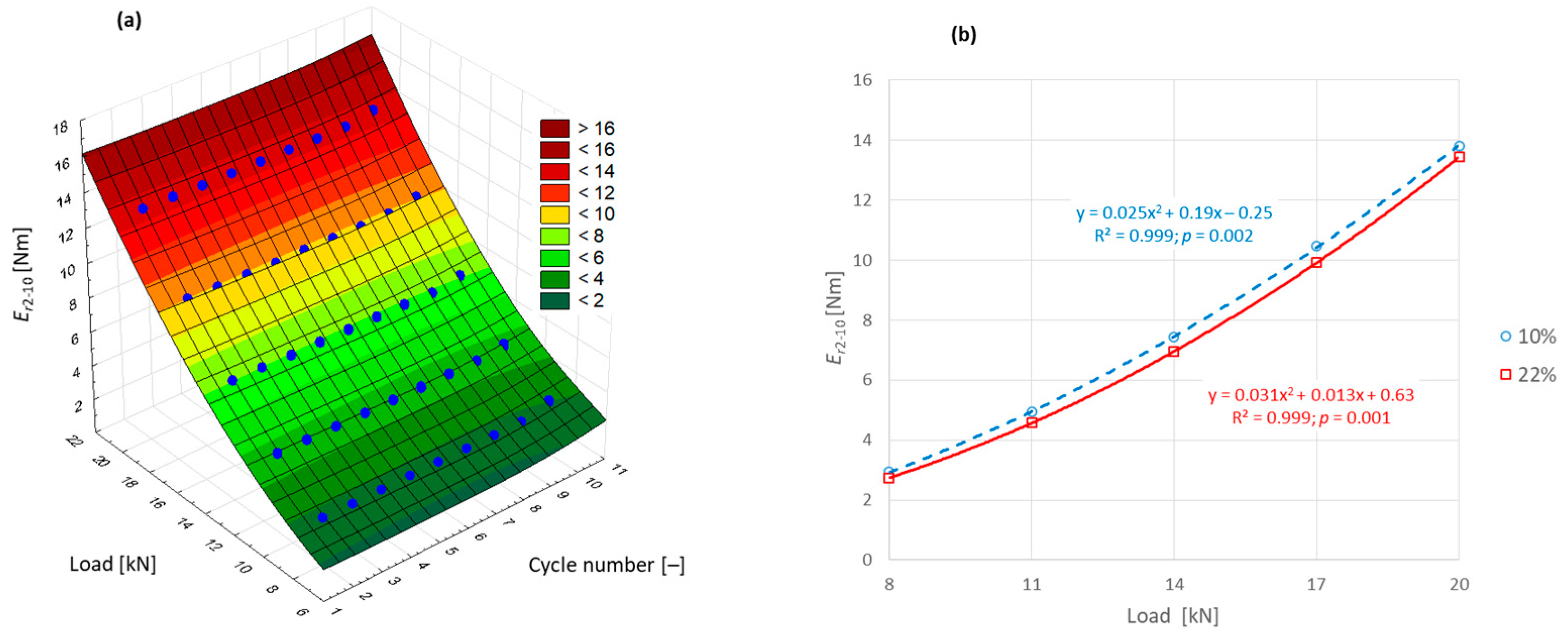
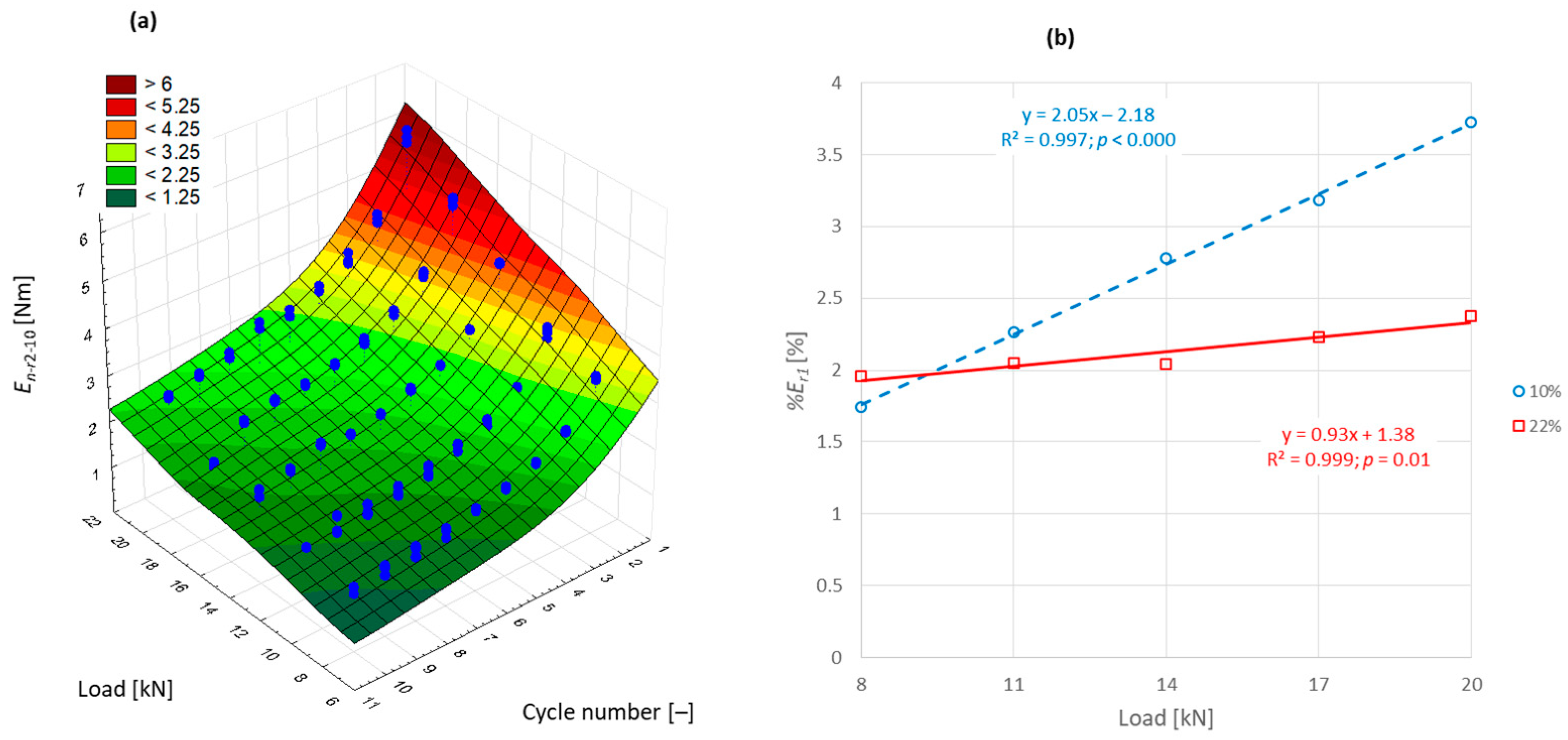
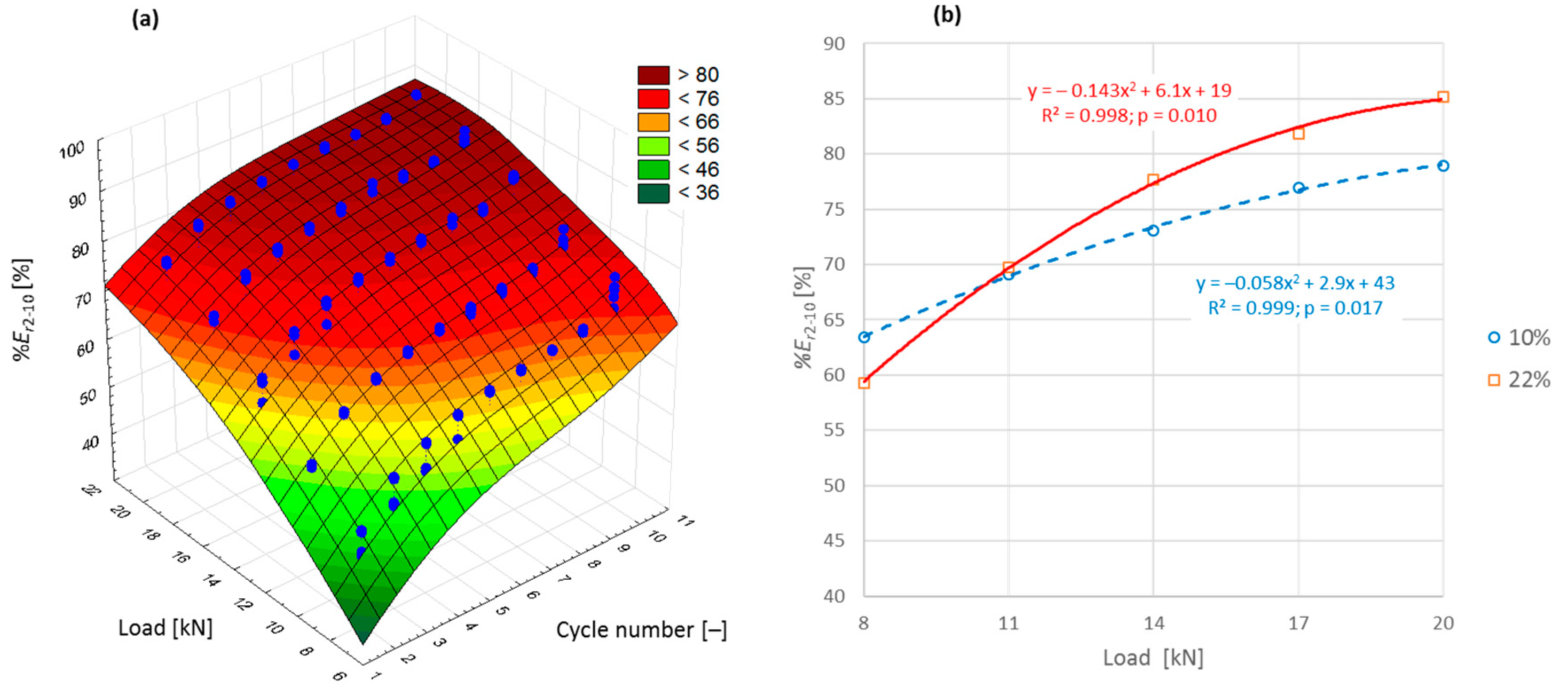
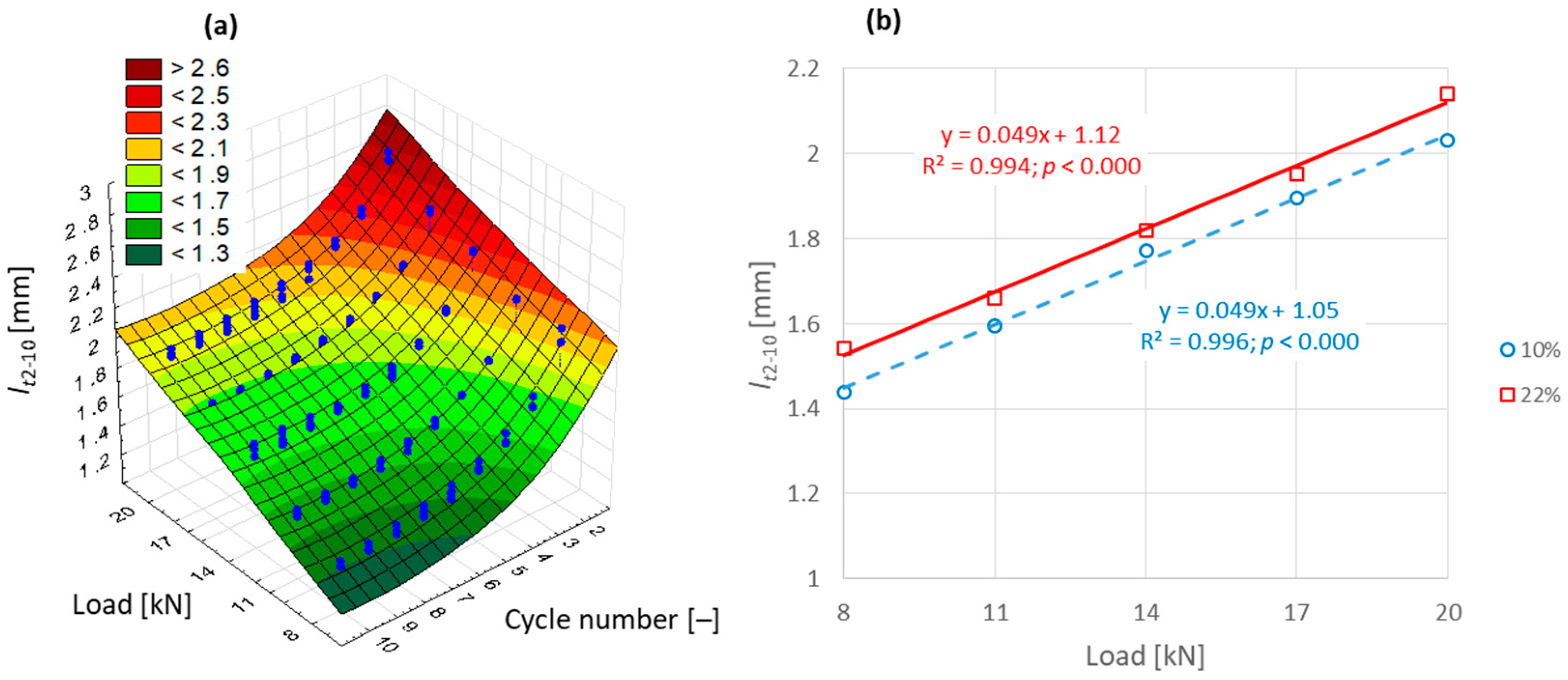
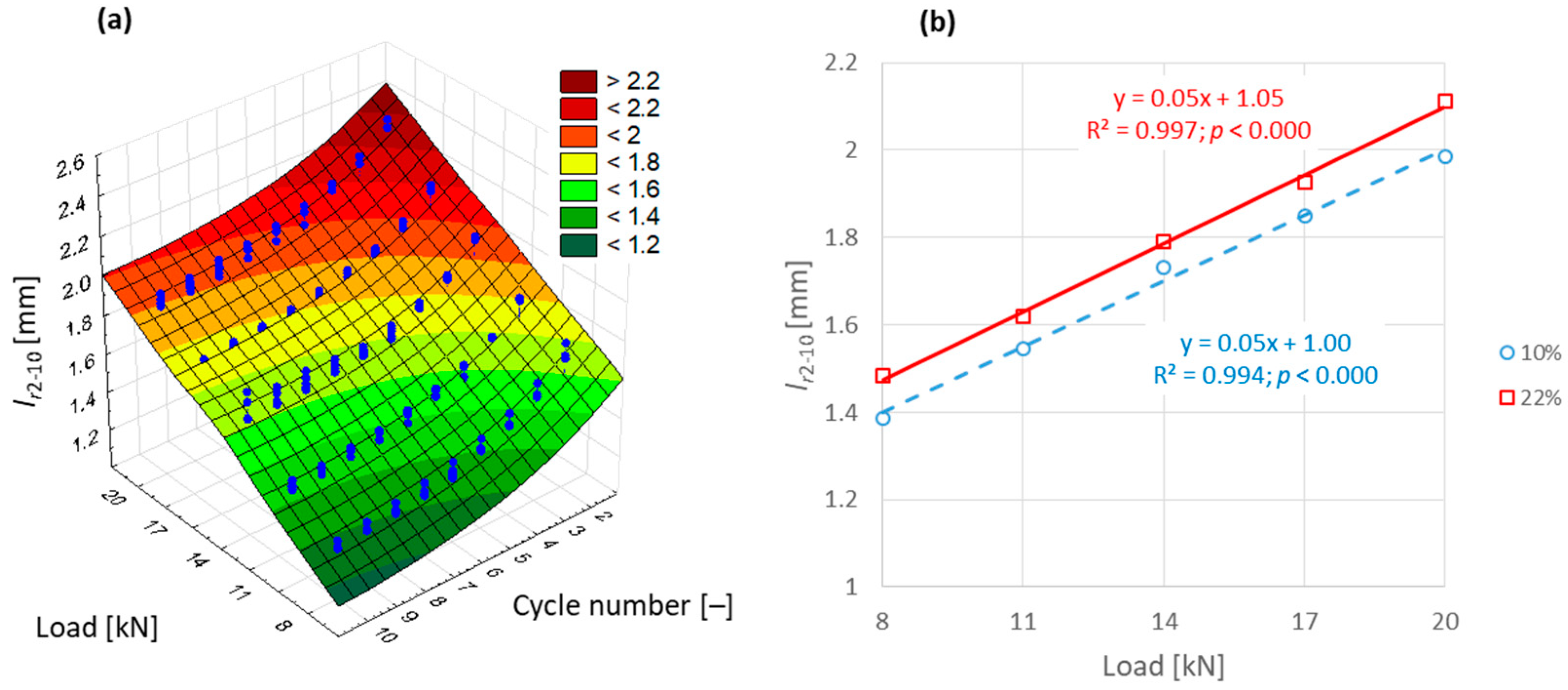
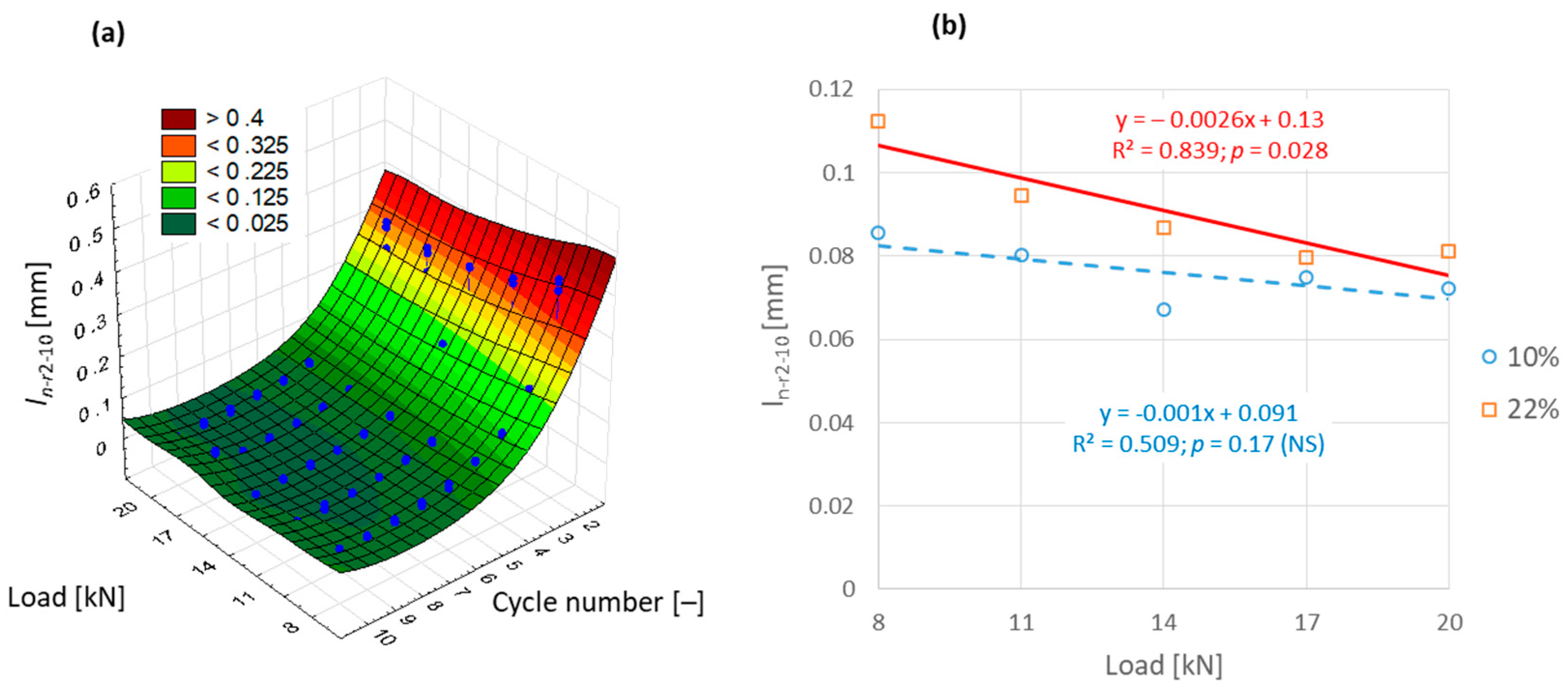


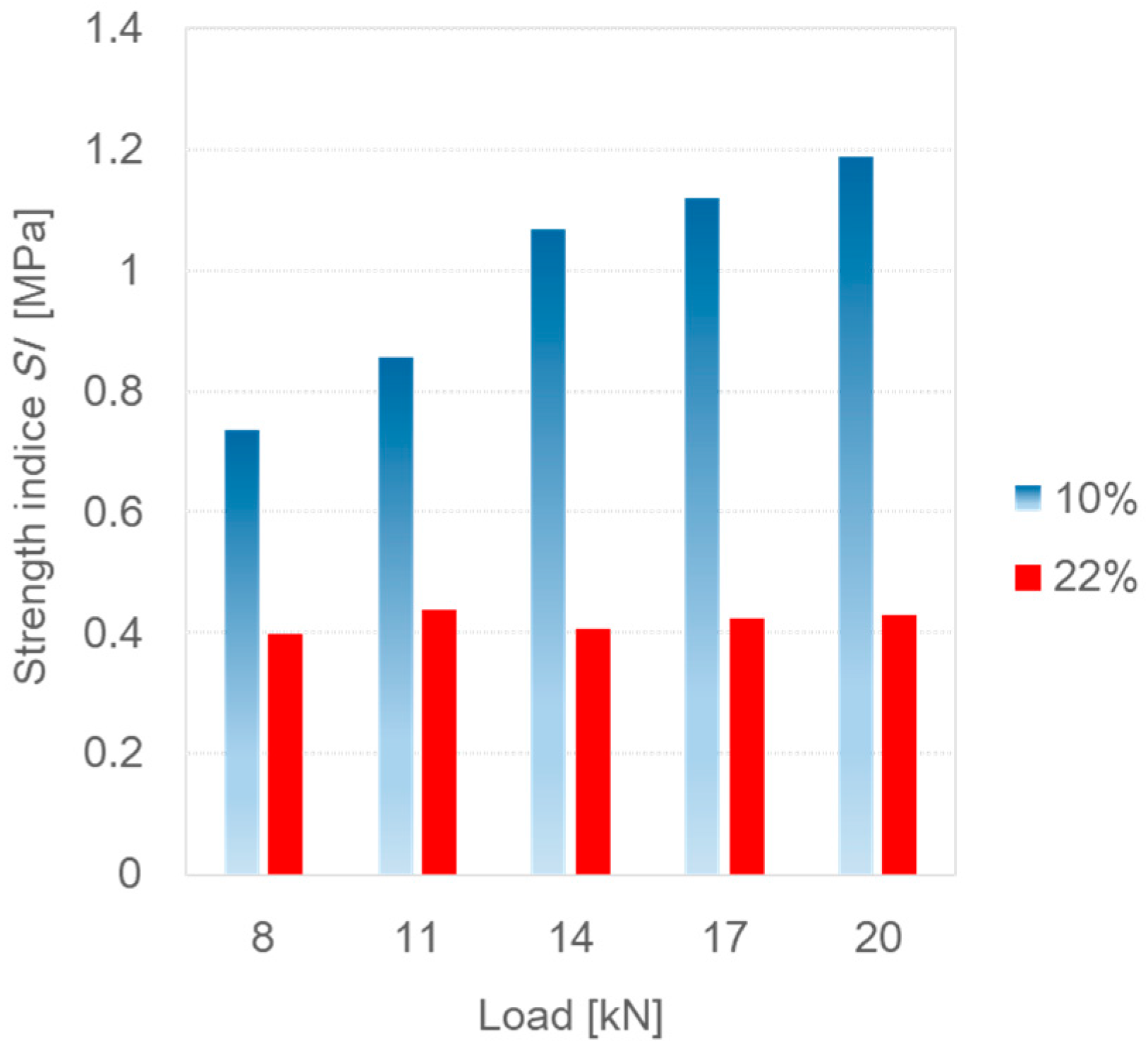
Disclaimer/Publisher’s Note: The statements, opinions and data contained in all publications are solely those of the individual author(s) and contributor(s) and not of MDPI and/or the editor(s). MDPI and/or the editor(s) disclaim responsibility for any injury to people or property resulting from any ideas, methods, instructions or products referred to in the content. |
© 2023 by the authors. Licensee MDPI, Basel, Switzerland. This article is an open access article distributed under the terms and conditions of the Creative Commons Attribution (CC BY) license (https://creativecommons.org/licenses/by/4.0/).
Share and Cite
Łysiak, G.; Kulig, R.; Kowalczyk-Juśko, A. Toward New Value-Added Products Made from Anaerobic Digestate: Part 2—Effect of Loading Level on the Densification of Solid Digestate. Sustainability 2023, 15, 7396. https://doi.org/10.3390/su15097396
Łysiak G, Kulig R, Kowalczyk-Juśko A. Toward New Value-Added Products Made from Anaerobic Digestate: Part 2—Effect of Loading Level on the Densification of Solid Digestate. Sustainability. 2023; 15(9):7396. https://doi.org/10.3390/su15097396
Chicago/Turabian StyleŁysiak, Grzegorz, Ryszard Kulig, and Alina Kowalczyk-Juśko. 2023. "Toward New Value-Added Products Made from Anaerobic Digestate: Part 2—Effect of Loading Level on the Densification of Solid Digestate" Sustainability 15, no. 9: 7396. https://doi.org/10.3390/su15097396




